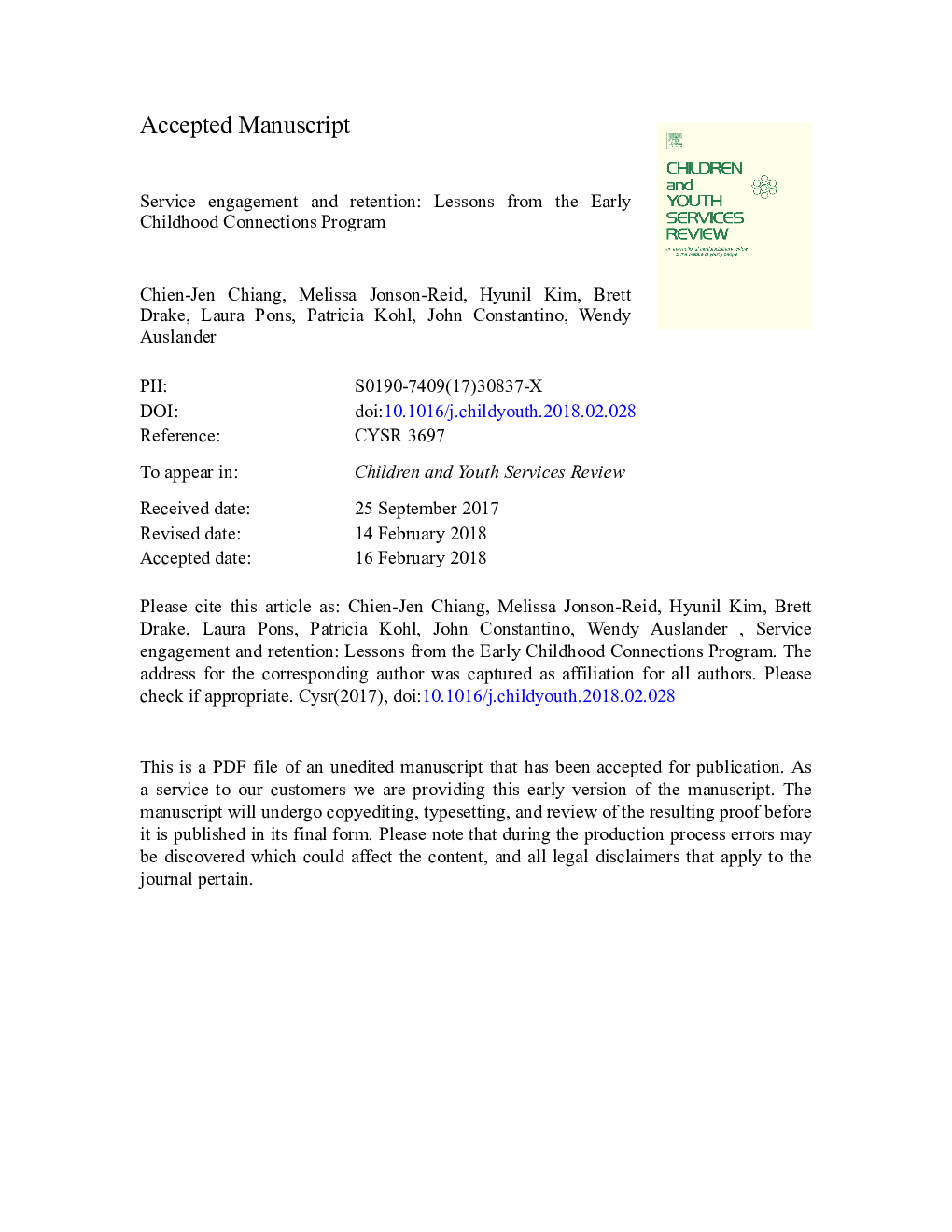| Article ID | Journal | Published Year | Pages | File Type |
|---|---|---|---|---|
| 6833148 | Children and Youth Services Review | 2018 | 43 Pages |
Abstract
The high attrition rates found in studies of early childhood home visitation create barriers to measuring the effectiveness of such programs. Most studies examine attrition at program completion. This practice may mask important differences in characteristics between families that end participation at various time points. This study helps address this gap by examining factors associated with percent attrition for early drop out (before three months) compared to the program midpoint (nine months or more) and program completion (18â¯months) using data from the treatment arm of a small feasibility study of enhanced referral to home visitation among child welfare-involved families (nâ¯=â¯64). Caregivers who identified as White tended to leave by the program midpoint and caregivers who had better social support were more likely to stay at the end of the program. This study is the only published study to date of participation in a community-based home visitation program by child welfare-involved families but several trends identified were consistent with prior studies with other populations. Given the very small sample size, both statistically significant and near significant trends are discussed in the context of existing literature. The practical variation found has implications for continuing to build knowledge of attrition in early childhood home visitation.
Keywords
Related Topics
Health Sciences
Medicine and Dentistry
Perinatology, Pediatrics and Child Health
Authors
Chien-Jen Chiang, Melissa Jonson-Reid, Hyunil Kim, Brett Drake, Laura Pons, Patricia Kohl, John N. Constantino, Wendy Auslander,
